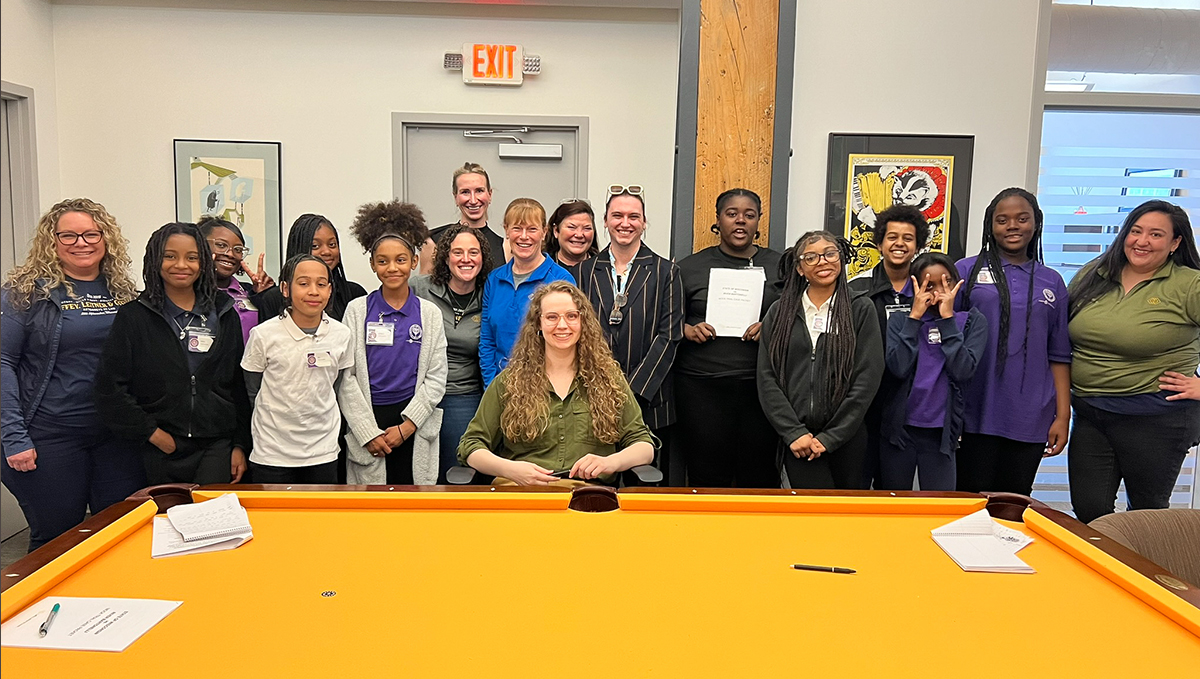The First Amendment Couldn’t Care Less About Political Affiliation
[/et_pb_text][et_pb_text _builder_version=”3.7″ text_font=”avenir-heavy|||on|||||” background_layout=”dark” text_letter_spacing=”2px” text_font_size=”14px”] 9 Minute Read [/et_pb_text][/et_pb_column][/et_pb_row][/et_pb_section][et_pb_section bb_built=”1″ specialty=”off” background_color=”#f7f7f4″ parallax_method=”off” custom_padding_tablet=”50px|0|50px|0″ custom_padding_last_edited=”on|desktop” prev_background_color=”#ffffff” next_background_color=”#222222″ _builder_version=”3.7″][et_pb_row admin_label=”row” custom_padding=”0px|||” padding_mobile=”on” parallax_method=”off” parallax_method_1=”off” parallax_method_2=”off” column_padding_mobile=”on” background_position=”top_left” background_repeat=”repeat” background_size=”initial” _builder_version=”3.7″][et_pb_column type=”1_4″][et_pb_text text_font=”PT Sans||||” text_font_size=”10em” text_text_color=”#323232″ use_border_color=”off” text_line_height=”1.1em” custom_margin=”0px||0px|” show_bottom_space=”off” _builder_version=”3.7″]6
[/et_pb_text][et_pb_divider color=”#aeaeac” show_divider=”on” divider_style=”solid” divider_position=”top” hide_on_mobile=”off” custom_css_main_element=”width:20px;” /][et_pb_text text_font=”PT Sans|on|||” text_text_color=”#363636″ use_border_color=”off” custom_margin=”-10px||0px|” background_position=”top_left” background_repeat=”repeat” background_size=”initial” _builder_version=”3.7″]APRIL, 2020
[/et_pb_text][et_pb_text text_font=”PT Sans||||” text_text_color=”#02b875″ use_border_color=”off” border_color=”#ffffff” border_style=”solid” custom_margin=”20px|||” _builder_version=”3.7″]Written by
Mark M. Leitner
Today’s post was supposed to wrap up my series on President Donald Trump’s bogus defamation claims. While I was finishing that on Friday, I learned that Judge Jill Karofsky, a Dane County circuit court judge in a hotly-contested election race for Justice Daniel Kelly’s seat on the Wisconsin Supreme Court, filed a lawsuit in Milwaukee County claiming that several television ads attacking her record as a district attorney and a judge were defamatory and violated a Wisconsin criminal statute prohibiting knowingly false statements about a candidate intended to influence voting.[1] Judge Karofsky’s suit is extraordinary and is happening while I write, so the final Trump post is bumped to later this week.
[/et_pb_text][et_pb_text text_font=”PT Serif||||” text_font_size=”20″ text_text_color=”#363636″ use_border_color=”off” custom_margin=”30px||0px|” text_font_size_last_edited=”on|tablet” background_position=”top_left” background_repeat=”repeat” background_size=”initial” _builder_version=”3.7″ module_class=”reg-cd-para”]The defendants, who created the ads and paid to air them, are a “special fund” of Wisconsin Manufacturers & Commerce established “to deliver the business message and promote grassroots activity to support the business agenda”;[2] the Republican State Leadership Committee (“RSLC”), a national organization whose “mission is to elect Republicans to down-ballot and state-level offices”;[3] and the RSLC’s Judicial Fairness Initiative (“JFI”), which “works to elect conservatives to the judiciary in states across the country.”[4]
[/et_pb_text][/et_pb_column][/et_pb_row][et_pb_row make_fullwidth=”off” use_custom_width=”off” width_unit=”on” use_custom_gutter=”off” custom_padding=”50px|||” padding_mobile=”on” allow_player_pause=”off” parallax=”off” parallax_method=”off” make_equal=”off” parallax_1=”off” parallax_method_1=”off” column_padding_mobile=”on” background_position=”top_left” background_repeat=”repeat” background_size=”initial”][et_pb_column type=”4_4″][et_pb_divider color=”#aeaeac” show_divider=”on” divider_style=”solid” divider_position=”top” hide_on_mobile=”off” /][et_pb_text text_font=”PT Serif||||” text_font_size=”45″ text_text_color=”#363636″ use_border_color=”off” custom_margin=”16px||30px|” text_line_height=”1.3em” text_font_size_last_edited=”on|desktop” text_font_size_tablet=”32″ max_width=”900px” background_position=”top_left” background_repeat=”repeat” background_size=”initial” module_alignment=”center” _builder_version=”3.7″ header_font_size=”44px” header_line_height=”1.3em” text_font_size_phone=”28″]In American law, prior restraints are more than unusual; the U.S. Supreme Court has never approved one.
[/et_pb_text][et_pb_divider color=”#aeaeac” show_divider=”on” divider_style=”solid” divider_position=”top” hide_on_mobile=”off” /][/et_pb_column][/et_pb_row][et_pb_row admin_label=”row” custom_padding=”0px|||” padding_mobile=”on” parallax_method=”off” parallax_method_1=”off” parallax_method_2=”off” column_padding_mobile=”on” background_position=”top_left” background_repeat=”repeat” background_size=”initial” _builder_version=”3.7″ disabled=”on” disabled_on=”on|on|on”][et_pb_column type=”1_3″][/et_pb_column][et_pb_column type=”2_3″][et_pb_text max_width=”620px” text_font=”PT Serif||||” text_font_size=”20″ text_text_color=”#363636″ use_border_color=”off” custom_margin=”30px||0px|” text_line_height=”1.5em” text_font_size_last_edited=”on|tablet” background_position=”top_left” background_repeat=”repeat” background_size=”initial” _builder_version=”3.7″]If a speaker says, “In my opinion John Jones is a liar,” he implies a knowledge of facts which lead to the conclusion that Jones told an untruth. Even if the speaker states the facts upon which he bases his opinion, if those facts are either incorrect or incomplete, or if his assessment of them is erroneous, the statement may still imply a false assertion of fact.
[/et_pb_text][/et_pb_column][/et_pb_row][et_pb_row admin_label=”row” custom_padding=”0px|||” padding_mobile=”on” parallax_method=”off” parallax_method_1=”off” parallax_method_2=”off” column_padding_mobile=”on” background_position=”top_left” background_repeat=”repeat” background_size=”initial” _builder_version=”3.7″ disabled=”off” disabled_on=”off|off|off”][et_pb_column type=”1_4″][/et_pb_column][et_pb_column type=”3_4″][et_pb_text text_font=”PT Serif||||” text_font_size=”20″ text_text_color=”#363636″ use_border_color=”off” custom_margin=”30px||0px|” text_font_size_last_edited=”on|tablet” background_position=”top_left” background_repeat=”repeat” background_size=”initial” _builder_version=”3.7″ module_class=”reg-cd-para”]The case jumped out at me, because Judge Karofsky asked the court to issue a preliminary injunction against the defendants, barring them from airing the ads in the days before the April 7 election. That is eye-popping because the judge wants a court to impose a prior restraint – a court order directing someone not to speak. In American law, prior restraints are more than unusual; the U.S. Supreme Court has never approved one. “For many years it has been clearly established that “any prior restraint on expression comes to this Court with a ‘heavy presumption’ against its constitutional validity.’”[5] According to the U.S. Press Freedom Tracker, “since 2017, at least 14 journalists or news organizations have been ordered by a judge to not publish information; 0 of those orders have been upheld.”[6]
Before I dig deeper into the merits of Judge Karofsky’s suit, I need to make my own political position clear: I support Judge Karofsky’s candidacy for the Supreme Court, I donated to her campaign, I co-hosted a fundraiser for her, and I will vote for her.
That said, I believe Judge Karofsky’s lawsuit is extraordinarily weak; I wish she had not filed it. Her substantive claims, for defamation and for the violation of the election-misrepresentation statute, have fatal legal flaws. But the biggest problem is what the brief leaves out.[7] The Supreme Court’s heavy presumption against prior restraint means that the judge and the opposing lawyers will be looking for Judge Karofsky’s explanation of why this case is so extraordinary that it is an exception to decades of Supreme Court precedent barring prior restraints. And on that issue, her brief is silent.
I’m not kidding.
No citation to Near v. Minnesota,[8] the 1931 decision that established the strong presumption under the First Amendment against the validity of any prior restraint. No discussion of New York Times v. United States,[9] the famed Pentagon Papers decision that halted the government’s effort to stop publication of a historical study of the Vietnam War. Nothing about any of the other Supreme Court cases and how they could be distinguished. Instead, the brief cites only Wisconsin procedural decisions establishing the standard for preliminary injunctive relief,[10] which are beside the point in a case seeking a prior restraint against political speech. And the brief says nothing about the general principle, followed by the Seventh Circuit and many other courts, that “equity does not enjoin a libel or slander and that the only remedy for defamation is an action for damages.”[11]
The only Wisconsin decision I found addressing these issues is not binding precedent; in fact, under Wisconsin’s rules of procedure, it can’t be cited at all. But it’s worth looking at because it shows how a court dealt with facts very similar to those in Judge Karofsky’s case. In Radcliffe for Assembly v. Coalition for America’s Families,[12] a candidate for the Wisconsin Assembly sued a group that had been airing ads attacking him on taxation issues, arguing that the ads were defamatory and violated §12.05, and seeking a temporary injunction. After the trial court granted the injunction based on the defamation claim, the group asked the Wisconsin Court of Appeals to lift the injunction, and it did: “We are aware of no caselaw that permits prior restraint of speech before an adjudication on the merits of the defamatory nature of the statements at issue.”[13] In other words, before Radcliffe could seek an injunction against speech, he would have had to win a final judgment that the group had defamed him, and because the case had just been filed, he was not in a position to do that.
I understand that Judge Karofsky’s lawyers are in a tough spot, having to prepare a lawsuit and a brief under tight time pressure. But I do not think they did themselves any favors by ignoring the prior restraint issue. More important, I do not think that they could have successfully argued that the facts of this case are equivalent to revealing secret information about troop movements during wartime – the classic situation that courts say would justify a prior restraint.
The defamation and statutory claims are also weak. I don’t think that Judge Karofsky is wrong to say that the ads are false and misleading. But I don’t even need to discuss the specific claims. As you know from reading my last article on President Trump’s weak defamation claims, when you are a public official like Judge Karofsky you can’t win simply by showing that a statement that hurts you is false; you need to show “actual malice” – that the defendant either knew it was false or acted with reckless disregard for whether it was true or false. And her arguments for actual malice are weak, especially in light of the Supreme Court’s admonition that “[p]ublic discussion of the qualifications of a candidate for public office presents what is probably the strongest possible case for application of the New York Times [actual malice] rule.”[14]
The brief claims that two fact patterns show that the defendants knew the ads were false or entertained serious doubts about the truth of the ads. First, the groups did not investigate the full case files in the criminal cases that the ads discuss to obtain the full, accurate facts about what Judge Karofsky did.[15] Second, the defendants continued airing the ads after her campaign informed the groups that the ads contained falsehoods.
It’s not surprising that Judge Karofsky uses inferences to prove actual malice. Very few defamation defendants will admit they lied and knew they were lying. Her problem is that case law prevents either of her fact patterns from being used to show actual malice. A failure to investigate, standing alone, isn’t enough to prove actual malice.[17] Likewise, a failure to retract does not tend to show actual malice.[18] And in a case involving former Chicago Bulls star Scottie Pippen, the Seventh Circuit held that both failure to investigate and failure to retract together did not amount to actual malice.[19] Pippen sued several media organizations that, in the course of reporting on his post-career financial problems, falsely stated that he had filed bankruptcy. Even though the court noted that “defendants had many ways to learn whether Pippen had filed for bankruptcy,” including a PACER search or asking Pippen, it ruled that failure to take these simple investigative steps did not show reckless disregard for the truth. Similarly, it held that “the fact that Pippen alerted the defendants by email after publication that he had not entered bankruptcy does not help him establish actual malice at the time of publication.”[20]
It’s not hard to dispense with the claim under Wis. Stat. §12.05, which provides that “[n]o person may knowingly make or publish, or cause to be made or published, a false representation pertaining to a candidate or referendum which is intended or tends to affect voting at an election.” By imposing a punishment based on the fact of falsehood, §12.05 probably cannot survive the United States Supreme Court’s decision in United States v. Alvarez,[21] which ruled that false statements are entitled to First Amendment protection unless they fall into one of the categories traditionally held to fall outside the scope of the First Amendment. The statute is also vulnerable to the First Amendment arguments that have been used to strike down similar criminal statutes addressing election-related falsehoods in Ohio,[22] Minnesota,[23] and Washington.[24] Finally, the Wisconsin Court of Appeals’ order in Radcliffe ruled that the plaintiff could not seek an injunction under §12.05 because it “does not appear to provide authority for a noncriminal action.”[25] That’s also true for Judge Karofsky’s claims.
[/et_pb_text][/et_pb_column][/et_pb_row][et_pb_row admin_label=”row” custom_padding=”0px|||” padding_mobile=”on” parallax_method=”off” parallax_method_1=”off” parallax_method_2=”off” column_padding_mobile=”on” background_position=”top_left” background_repeat=”repeat” background_size=”initial” _builder_version=”3.7″ disabled=”off” disabled_on=”off|off|off”][et_pb_column type=”1_4″][/et_pb_column][et_pb_column type=”3_4″][et_pb_text text_font=”PT Serif||||” text_font_size=”28″ text_text_color=”#363636″ use_border_color=”off” custom_margin=”10px||0px|” text_line_height=”1.6em” text_font_size_last_edited=”on|phone” background_position=”top_left” background_repeat=”repeat” background_size=”initial” _builder_version=”3.7″ module_class=”cd-end-para”]The only reference to the First Amendment in the brief supporting Judge Karofsky’s request for an injunction is in the conclusion: “But the First Amendment does not protect the creator of clearly false assertions such as the ones at issue here.”[26] It doesn’t cite anything to support this sentence – not a case, an article, or even an editorial. Maybe instead of offering an empty platitude, the brief should have taken head-on the Supreme Court’s view that “prior restraints on speech and publication are the most serious and the least tolerable infringement on First Amendment rights.”[27] The First Amendment issues I’ve discussed in this post are at the core of Judge Karofsky’s case, and pretending that those issues did not exist was pointless.
[/et_pb_text][/et_pb_column][/et_pb_row][et_pb_row admin_label=”row” custom_padding=”0px|||” padding_mobile=”on” parallax_method=”off” parallax_method_1=”off” parallax_method_2=”off” column_padding_mobile=”on” background_position=”top_left” background_repeat=”repeat” background_size=”initial” _builder_version=”3.7″][et_pb_column type=”1_4″][/et_pb_column][et_pb_column type=”3_4″][et_pb_divider _builder_version=”3.7″ color=”#898989″ height=”15px” /][et_pb_text text_font=”PT Serif||||” text_font_size=”20″ text_text_color=”#363636″ use_border_color=”off” custom_margin=”30px||0px|” text_font_size_last_edited=”on|tablet” background_position=”top_left” background_repeat=”repeat” background_size=”initial” _builder_version=”3.7″ module_class=”footnote-cd” disabled=”on” disabled_on=”on|on|on”] [1] Monitor Patriot Co. v. Roy, 401 U.S. 265, 272 (1971). (return) [2] In re: Policy Regarding Character Qualifications in Broadcast Licensing, 102 F.C.C.2d 1179, 1213 (1986) (return) [3] Id. (Emphasis added.) (return) [/et_pb_text][et_pb_toggle _builder_version=”3.7″ title=”Footnotes” module_class=”footnote-cd” open=”on”] [1] Wis. Stat. §12.05. (return) [2] https://www.wmc.org/issues/advocacy/recentvictories/ (return) [3] https://rslc.gop/ (return) [4] https://rslc.gop/about_rslc/jfi/ (return) [5] CBS, Inc. v. Davis, 510 U.S. 1315, 1317 (1994)(Blackmun, J. in chambers), quoting Organization for a Better Austin v. Keefe, 402 U.S. 415, 419, 91 S.Ct. 1575, 1578, 29 L.Ed.2d 1 (1971). (return) [6] https://pressfreedomtracker.us/prior-restraint/ (return) [7] You can get a PDF copy of Judge Karofsky’s brief here: https://www.courthousenews.com/wp-content/uploads/2020/04/wis-karofsky.pdf. I did not find a copy of her complaint online, and at this point in the case the legal arguments for an injunction are much more important than the allegations of the complaint. (return) [8] 283 U.S. 697 (1931). (return) [9] 403 U.S. 713 (1971). (return) [10] Karofsky Brief, pp. 8-9. (return) [11] E360 INSIGHT v. The Spamhaus Project, 500 F.3d 594, 606 (7th Cir. 2007). (return) [12] 2008AP2703-LV (Wis. Ct. App, Nov. 3, 2008) (order granting motion to lift trial court temporary injunction). (return) [13] Id. at 4. (return) [14] Ocala Star-Banner v. Damron, 401 U.S. 295, 300 (1971). (return) [15] Karofsky Brief, pp. 10, 12. (return) [16] Id., pp. 11, 12-13. (return) [17] St. Amant v. Thompson, 390 U.S. 727, 731, 733 (1968). (return) [18] New York Times v. Sullivan, 376 U.S. 254, 286 (1964). (return) [19] Pippen v. NBCUniversal Media, LLC, 734 F.3d 610, 614-15 (7th Cir. 2013). (return) [20] Id. at 614. (return) [21] 567 U.S. 709 (2012). (return) [22] Susan B. Anthony List v. Driehaus, 814 F.3d 466 (6th Cir. 2016). (return) [23] 281 Care Committee v. Arneson, 766 F.3d 774 (8th Cir. 2014). (return) [24] Rickert v. State, Public Disclosure Comm’n, 168 P.3d 826 (Wash. 2007). (return) [25] 2008AP2703-LV (Wis. Ct. App, Nov. 3, 2008), p. 3. (return) [26] Karofsky Brief, p. 14. (return) [27] Nebraska Press Ass’n v. Stuart, 427 U.S. 539, 559 (1976). (return) [/et_pb_toggle][/et_pb_column][/et_pb_row][/et_pb_section][et_pb_section bb_built=”1″ specialty=”off” background_color=”#222222″ parallax_method=”off” custom_padding=”0px|||” _builder_version=”3.7″ prev_background_color=”#f7f7f4″][et_pb_row make_fullwidth=”on” use_custom_width=”off” width_unit=”on” use_custom_gutter=”on” gutter_width=”2″ padding_mobile=”on” allow_player_pause=”off” parallax=”off” parallax_method=”off” make_equal=”off” parallax_1=”off” parallax_method_1=”off” parallax_2=”off” parallax_method_2=”off” parallax_3=”off” parallax_method_3=”off” column_padding_mobile=”on” custom_padding=”40px|||” background_position=”top_left” background_repeat=”repeat” background_size=”initial”][et_pb_column type=”1_3″][et_pb_image src=”https://llgmke.com/wp-content/uploads/2020/04/vehement-lowbox.jpg” align=”center” force_fullwidth=”on” use_border_color=”off” url=”/vehement-caustic-and-unpleasantly-sharp-attacks-on-public-officials-its-the-american-way/” animation_style=”fade” animation_duration=”500ms” animation_intensity_slide=”10%” _builder_version=”3.7″ disabled=”off” disabled_on=”off|off|off” /][et_pb_text text_orientation=”center” text_font=”PT Sans|on|||” text_font_size=”12″ text_text_color=”#888888″ text_line_height=”1.2em” use_border_color=”off” text_letter_spacing=”2px” custom_margin=”30px|||” background_position=”top_left” background_repeat=”repeat” background_size=”initial” module_alignment=”center” _builder_version=”3.7″ disabled=”off” disabled_on=”off|off|off”]PRESIDENT TRUMP
[/et_pb_text][et_pb_text text_orientation=”center” text_font=”PT Sans||||” text_font_size=”24″ text_text_color=”#ffffff” text_line_height=”1.2em” use_border_color=”off” background_position=”top_left” background_repeat=”repeat” background_size=”initial” module_alignment=”center” _builder_version=”3.7″ disabled=”off” disabled_on=”off|off|off”]Vhement, Caustic, and Unpleasantly Sharp Attacks on Public Officials: It’s the American Way!
[/et_pb_text][/et_pb_column][et_pb_column type=”1_3″][et_pb_image src=”https://llgmke.com/wp-content/uploads/2020/04/empty-lowbox-1.jpg” align=”center” force_fullwidth=”on” use_border_color=”off” url=”/all-the-presidents-empty-threats/” animation_style=”fade” animation_duration=”500ms” animation_intensity_slide=”10%” show_bottom_space=”off” _builder_version=”3.7″ /][et_pb_text text_orientation=”center” text_font=”PT Sans|on|||” text_font_size=”12″ text_text_color=”#888888″ text_line_height=”1.2em” use_border_color=”off” text_letter_spacing=”2px” custom_margin=”30px|||” background_position=”top_left” background_repeat=”repeat” background_size=”initial” module_alignment=”center” _builder_version=”3.7″]PRESIDENT TRUMP
[/et_pb_text][et_pb_text text_orientation=”center” text_font=”PT Sans||||” text_font_size=”24″ text_text_color=”#ffffff” text_line_height=”1.2em” use_border_color=”off” background_position=”top_left” background_repeat=”repeat” background_size=”initial” module_alignment=”center” _builder_version=”3.7″]All the President’s Empty Threats
[/et_pb_text][/et_pb_column][et_pb_column type=”1_3″][et_pb_image src=”https://llgmke.com/wp-content/uploads/2020/04/president-lowbox-1.jpg” align=”center” force_fullwidth=”on” use_border_color=”off” url=”/the-president-wants-you-to-stop/” background_position=”top_left” background_repeat=”repeat” background_size=”initial” animation_style=”fade” animation_duration=”500ms” animation_intensity_slide=”10%” _builder_version=”3.7″ disabled=”off” disabled_on=”off|off|off” /][et_pb_text text_orientation=”center” text_font=”PT Sans|on|||” text_font_size=”12″ text_text_color=”#888888″ text_line_height=”1.2em” use_border_color=”off” text_letter_spacing=”2px” custom_margin=”30px|||” background_position=”top_left” background_repeat=”repeat” background_size=”initial” module_alignment=”center” _builder_version=”3.7″ disabled=”off” disabled_on=”off|off|off”]PRESIDENT TRUMP
[/et_pb_text][et_pb_text text_orientation=”center” text_font=”PT Sans||||” text_font_size=”24″ text_text_color=”#ffffff” text_line_height=”1.2em” use_border_color=”off” background_position=”top_left” background_repeat=”repeat” background_size=”initial” module_alignment=”center” _builder_version=”3.7″ disabled=”off” disabled_on=”off|off|off”] [/et_pb_text][/et_pb_column][/et_pb_row][/et_pb_section]


